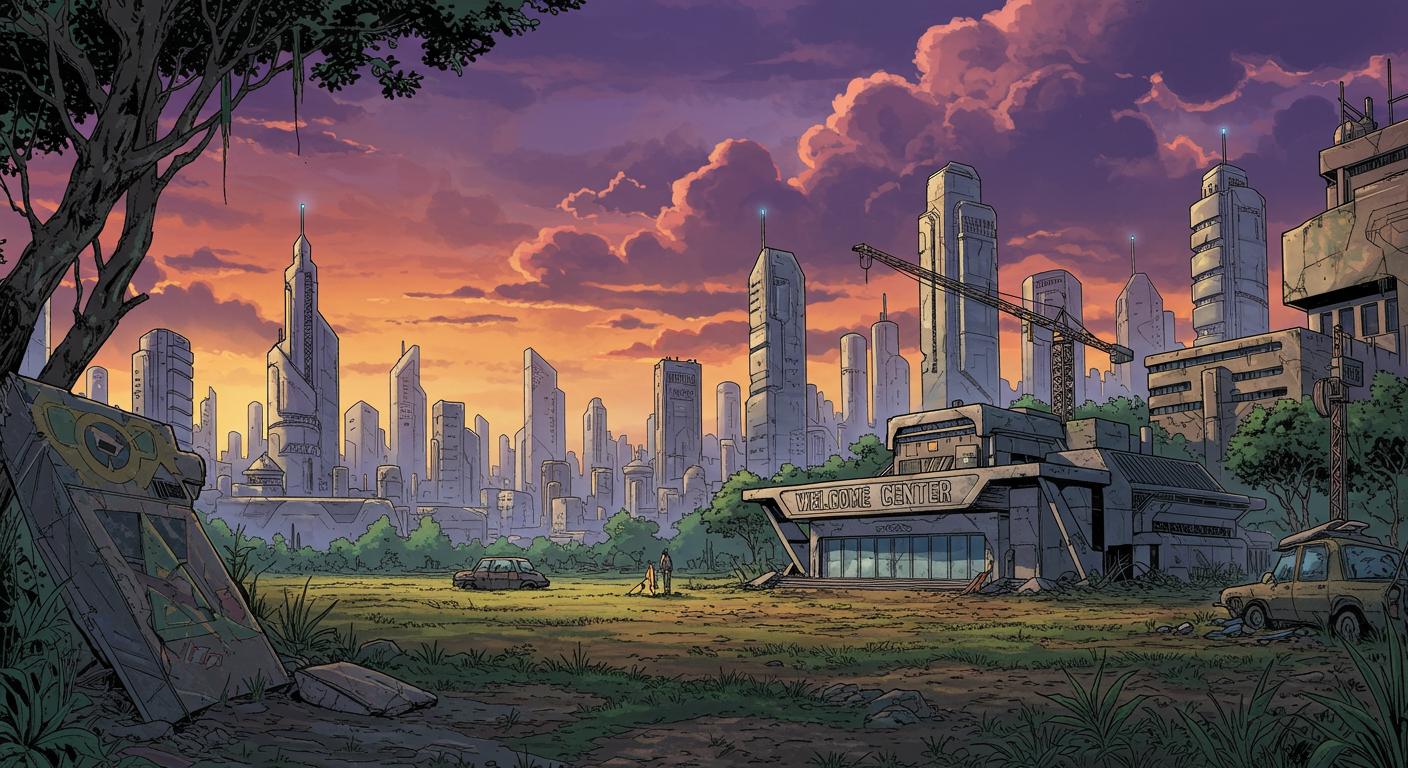A few years back, the internet briefly flickered with hopeful headlines: Akon, pop chart veteran and aspiring mogul, was building a $6 billion “real-life Wakanda” on Senegal’s coast—a city promising luxury towers, renewable energy, gleaming hospitals, and its own cryptocurrency, Akoin. The project, trumpeted in 2018 with enough glossy renderings to make Marvel’s art department blush, was set to transform 136 acres near Mbodiène into a pan-African utopia. Reality, as is so often the case, had other plans.
From Tech Utopia to Goat Sanctuary
Fast forward to 2025 and Senegalese authorities have reclaimed almost all of the land originally set aside for Akon City, a development now famous mostly for its lone, half-finished welcome center—currently sharing occupancy with local livestock. As TechieGamers documents, seven years of missed milestones, tanking cryptocurrency, and evaporating investment have left little more than a monument to over-promising and under-delivering. The much-hyped site’s main structure is a partially constructed visitor center, surrounded by undeveloped fields and, in an unexpected twist, grazing goats.
Early fanfare certainly played the part: the city was envisioned as an innovation hub for the African diaspora, complete with a 5,000-bed hospital and streets powered by renewable energy. One could almost picture the flying cars from the press kit. But as time passed, the disconnect between the original vision and on-the-ground progress became harder to overlook.
Dreams Meet Economy: The Crypto Quickstep
Dig beneath the renderings, and the real bedrock of Akon City was meant to be Akoin—a cryptocurrency with a narrative arc that might make even the most patient blockchain enthusiast sigh. Its value slipped from $0.15 at launch to a mere $0.003 by last August, a journey that TechieGamers notes took it from “hopeful” to “hardly worth the WiFi.” But financial turbulence wasn’t the only headwind.
As detailed by the Daily Mail, Senegal’s steadfast use of the CFA franc—supervised by the Central Bank of West African States—made the proposition of a parallel local currency more fantasy than feasible. Regulators raised eyebrows, and even as Akon reassured media in 2022 that things were “100,000% moving,” drone footage captured just a single stranded building in a quiet, grassy expanse.
Adding to the strain, payments to Sapco-Senegal, the state entity overseeing the coastal site, fell behind, which led to a government ultimatum: either begin real construction or forfeit almost all of the land. The response, or rather lack of it, sealed Akon City’s fate.
Local Reality Check
Villagers who gave up farmland for the development remain—still—without compensation, fueling frustration and, at times, some gallows humor. It’s telling that when TechieGamers reached out, one local summed up the site’s metamorphosis: aside from a basketball court, some sports fencing, and the swarm of journalists, “all we’ve seen are journalists and goats.” The Daily Mail’s look at the situation paints the same picture: a futuristic metropolis in the mind, but little more than an oversized, underused kiosk on the ground.
Akon himself admitted in a late-2024 interview, as cited by TechieGamers, that he “promoted it way, way too early.” There’s a certain blunt honesty there—though it’s unlikely to offer much comfort to those still waiting on either jobs or reimbursement.
The Welcome Center’s Long Hello
As the 2026 Youth Olympic Games approach and the government turns toward more grounded infrastructure, officials have confirmed to the Daily Mail that Akon City is being swapped for what’s simply called “a realistic project.” Specifics are thin, but “less fantasy and more feasibility” seems to be the rallying cry. There’s a certain poetry—if a little bit of fatigue—in watching futuristic dreams make way for perhaps something as prosaic as a new highway on-ramp.
What ultimately stands in Mbodiène is not a new Wakanda, but a half-finished welcome center—and a lasting question: how many times will grand, crypto-fueled blueprints materialize as half-built shells, their primary audience now four-legged? Until budgets, timetables, and the basics of development learn to keep pace with hyperbolic launch events, it’s safe to say the goats will stay first in line at Senegal’s most expensive visitor kiosk. In the meantime, whatever comes next for the reclaimed land may aim for inspiration, but a bit less for headlines.







